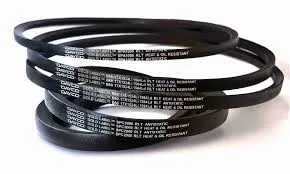- Arabic
- French
- Russian
- Spanish
- Portuguese
- Turkish
- Armenian
- English
- Albanian
- Amharic
- Azerbaijani
- Basque
- Belarusian
- Bengali
- Bosnian
- Bulgarian
- Catalan
- Cebuano
- Corsican
- Croatian
- Czech
- Danish
- Dutch
- Afrikaans
- Esperanto
- Estonian
- Finnish
- Frisian
- Galician
- Georgian
- German
- Greek
- Gujarati
- Haitian Creole
- hausa
- hawaiian
- Hebrew
- Hindi
- Miao
- Hungarian
- Icelandic
- igbo
- Indonesian
- irish
- Italian
- Japanese
- Javanese
- Kannada
- kazakh
- Khmer
- Rwandese
- Korean
- Kurdish
- Kyrgyz
- Lao
- Latin
- Latvian
- Lithuanian
- Luxembourgish
- Macedonian
- Malgashi
- Malay
- Malayalam
- Maltese
- Maori
- Marathi
- Mongolian
- Myanmar
- Nepali
- Norwegian
- Norwegian
- Occitan
- Pashto
- Persian
- Polish
- Punjabi
- Romanian
- Samoan
- Scottish Gaelic
- Serbian
- Sesotho
- Shona
- Sindhi
- Sinhala
- Slovak
- Slovenian
- Somali
- Sundanese
- Swahili
- Swedish
- Tagalog
- Tajik
- Tamil
- Tatar
- Telugu
- Thai
- Turkmen
- Ukrainian
- Urdu
- Uighur
- Uzbek
- Vietnamese
- Welsh
- Bantu
- Yiddish
- Yoruba
- Zulu
Dec . 11, 2024 23:28 Back to list
poly rib belt
Understanding Poly Rib Belts A Key Component in Modern Engines
Poly rib belts, also known as serpentine belts or multi-rib belts, play a crucial role in the functionality of modern automotive engines. These belts are designed to drive multiple peripheral devices in an engine, such as the alternator, power steering pump, air conditioning compressor, and water pump. By understanding the design, function, and maintenance of poly rib belts, vehicle owners can ensure the longevity and efficiency of their engines.
Design and Advantages
Poly rib belts are characterized by their flat, flexible design with multiple, raised ribs that run longitudinally along their length. This unique design provides a larger contact area with the pulleys, promoting better grip and reducing slippage. The flexibility of these belts allows them to navigate through tight spaces and around multiple pulleys, which is a significant advantage over older V-belts.
One of the primary benefits of poly rib belts is their efficiency. The increased surface area contact minimizes energy loss, which means that more power is transferred from the engine to the accessories it drives. This efficiency is particularly important in today’s fuel-conscious world, where vehicles are increasingly designed to maximize fuel economy while minimizing emissions.
Moreover, poly rib belts are typically made from durable materials such as EPDM (ethylene propylene diene monomer) rubber, which enhances their resistance to heat, oil, and ozone. This durability translates into longevity, making poly rib belts less prone to wear and tear and reducing the frequency of replacements.
Functionality
poly rib belt

The primary function of a poly rib belt is to power various engine accessories
. As the engine runs, the crankshaft turns the belt, which, in turn, drives the pulley system connected to the various components. For instance, as the belt rotates, it powers the alternator to generate electricity, the power steering pump for easier steering, and the air conditioner for climate control within the vehicle.The single-belt design simplifies installation and maintenance, as it eliminates the need for multiple separate belts to drive different components. This not only reduces the potential for malfunction but also streamlines the overall engine layout, which can lead to weight savings and improved engine efficiency.
Maintenance and Signs of Wear
Regular maintenance of poly rib belts is essential for optimal vehicle performance. A well-functioning belt should exhibit no signs of cracking, fraying, or glazing. Drivers should routinely check the belt tension; too loose or too tight can lead to premature wear or belt failure.
Common signs that a poly rib belt may need replacement include squeaking noises during acceleration, a noticeable decrease in power steering performance, or issues with the air conditioning system. If you notice any of these symptoms, it is advisable to have the belt inspected and, if necessary, replaced by a qualified mechanic.
Conclusion
Poly rib belts are a vital component of modern automotive engines, providing efficiency, reliability, and ease of maintenance. Understanding their design, function, and maintenance needs can help vehicle owners enjoy a smooth driving experience while extending the life of their engines. By paying attention to the condition of the poly rib belt, drivers can avoid unexpected breakdowns and ensure that their vehicles perform at their best for years to come.
-
Flat Drive Belts for Sale – Durable & High Performance
NewsAug.11,2025
-
Precise Timing Belt Operation: Function & FAQ Guide
NewsAug.10,2025
-
Precision Double-Sided Toothed Endless Flat Drive Belts
NewsAug.09,2025
-
Durable Tooth Belts: Precision Power for Poly V Belt Drives
NewsAug.08,2025
-
Reliable Diesel Engine Belts & Tensioners for Optimal Performance
NewsAug.07,2025
-
23100-KVB-901 Drive Belt for Honda VARIO | OEM Performance
NewsAug.06,2025

